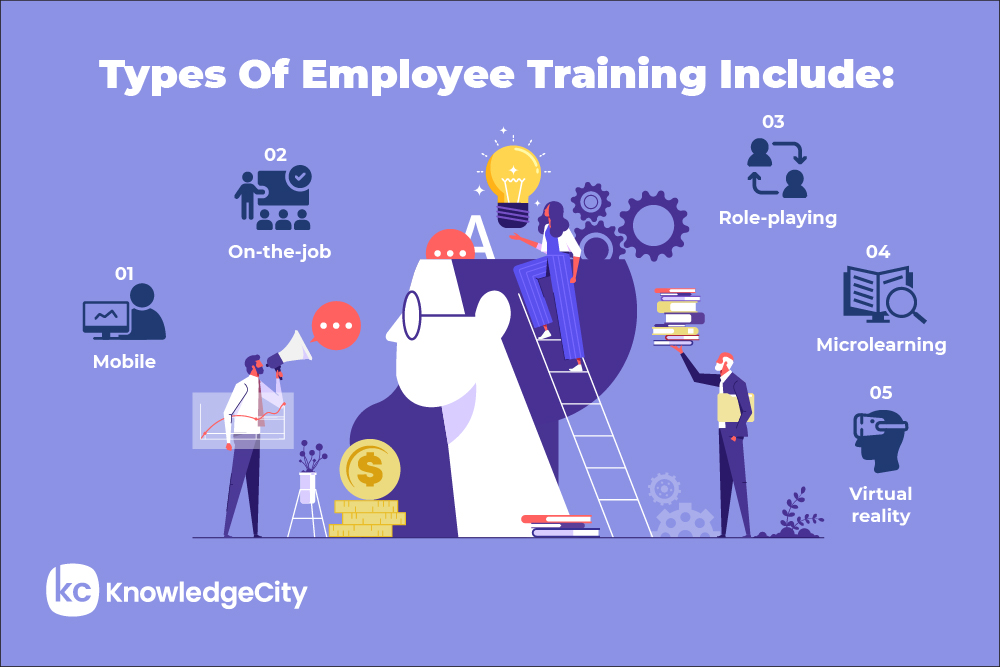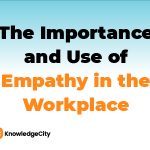The business landscape is in constant flux, driven by market shifts, technological advancements, and evolving workforce needs. By 2025, roughly half of all employees will require reskilling and upskilling to remain relevant in the job market. In this dynamic environment, how can leaders cultivate a workforce of skilled and efficient employees?
In this article, we’ll define what employee training is and why it’s important and provide a detailed guide on some effective training strategies.

What Is Employee Training?
Employee training is a program or method that guides employees to learn specific skills or increase knowledge to enhance their job performance. This learning and development process can look different for any given company, team,or individual.
Why Is Employee Training Important?
Employee training develops employees’ skill sets, which allows for improved performance and increased engagement in their position. Not only that, but it also creates a unified focus and common language among the entire staff through onboarding and continuing education.
Employee training also:
- Allows employees to be better equipped to adapt to new trends
- Raises employee confidence
- Nurtures internal talent
- Supports employee retention, and
- Allows for succession planning
The goals of employee training should be to fulfill requirements that enhance individual roles within the organization, contribute to skill development, and instill leadership qualities among all employees.
How To Train Employees: Eight Effective Staff Training Strategies
Having a clear understanding of an organization’s or team’s training and development goals is essential before determining how to conduct employee training. One effective approach is to devise a training strategy.
Step 1: Identify Training Needs
The first step to creating this strategy is to identify training needs.
Consider the following questions:
- Are there training programs or procedures already in place?
- How have trends changed in the field?
- Do employees need skill-specific training, soft skills training, or both?
- What skills do employees need to achieve organizational goals?
Step 2: Assess Current Staff Knowledge and Skills
The second step involves assessing staff performance. It’s important to evaluate employees’ current knowledge and skills, both individually and as a team.
Here are some key questions to ask:
- What skills do employees currently possess?
- Which areas need improvement to enhance both individual and team performance?
Step 3: Assess Resources
Assessing resources is a critical step in the planning and execution of an employee training program. It ensures the program is practical, efficient, and successful, ultimately benefiting both the organization and its workforce.
For this step, ask:
- How much time can be allocated to training?
- Can the training be handled internally, or is external assistance required?
- Is there a training budget in place, or does one need to be established?
Step 4: Prioritize Training Needs
Prioritizing employee training needs is vital for nurturing a skilled, engaged, and adaptable workforce. By investing in employee development, organizations not only see immediate improvements in performance and productivity but also set the stage for long-term success and competitiveness in today’s dynamic business world.
Consider these questions:
- Do individuals require training on specific skills within a short timeframe? This could be relevant for the introduction of a new product, the adoption of a new system, or for newly hired personnel.
- Are there skills where the team is significantly lacking? Those may take priority over skills that would just be nice to have.
Step 5: Set a Budget
Having a specific budget is important, even if there’s already one allocated for training. When implementing the new training strategy, it’s essential to establish a clear budget. This should cover expenses for vendors, materials, and the time required from employees.
Step 6: Draft a Training Plan
Creating a training plan involves outlining the best practices for employee training and tailoring them to fit the organization’s needs. We’ll cover this in more detail later.
Step 7: Hire or Assign Training Leaders
In certain situations, current employees may be able to train new employees. In other cases, outside vendors may be needed to conduct training that includes certifications or content areas that the entire team is lacking.
Step 8: Monitor Performance and Adjust as Needed
Keeping a close eye on performance is key to successful employee training. Regular evaluation helps gauge how well the training is working and how employees are performing as a result. Be ready to tweak the training program as required to ensure it keeps delivering the desired results.
10 Types of Employee Training
When drafting a training plan, it’s important to consider which type or types of training will be best for the organization and its employees. There are many approaches to employee training, and the models and methods aren’t one-size-fits-all. Here are 10 options for employee training recommended by instructional designer Dr. Aaron L. Smith:
- On-the-job training On-the-job training involves a learn-as-you-go approach where employees are placed directly into their roles, often with support from a supervisor or experienced colleague. They learn while performing tasks, enabling them to ask questions and apply knowledge to real-life scenarios as they arise.
- Gamification This relatively new type of training allows employees to learn through game-like elements, such as by incorporating leaderboards or assigning points. The goal is to engage employees through fun interactions.
- Microlearning These compact learning modules are created to prevent employees from training fatigue. The information provided can be as comprehensive as needed. However, it’s usually broken up into single objectives or topics.
- Peer-to-peer learning As opposed to on-the-job training, the peer-to-peer approach focuses on two or more employees with roughly the same knowledge or experience level. These employees then learn from each other through sharing and collaboration.
- Blended learning This is a mixed-method model of training where employees spend some time using technology as a vehicle for training, and some time in a classroom-type setting.
- Experiential learning This is the process of learning through experience, which may or may not include hands-on learning or on-the-job training. Experiential learning is reflective, so the learning is focused on the systems, processes, or inner workings of what’s being taught, rather than taking the information at face value.
- Mobile learning This is learning that can be done from a mobile device–most often a mobile phone. The advantage to mobile learning is that it allows employees to learn on the go, and at their own pace.
- Role-playing This is an active form of training where employees perform and resolve realistic scenarios under the guidance of a supervisor or trainer. The performances are typically followed up with reflection or discussion.
- Personalized learning This is training that’s tailored specifically to the individual employee. This type of training takes an individual’s skills, knowledge, and needs into consideration beforehand.
- Virtual reality training This is the digital simulation of a real-life scenario. Virtual reality can be useful for immersing employees in the experience, even though it’s not actually taking place.
Regardless of which employee strategies an organization adopts, supporting continued learning and developing smart goals for training and development will make it more effective. Highly trained and knowledgeable employees keep an organization competitive and productive.
From business and leadership classes to safety and compliance training, we offer a wide range of engaging courses designed to fuel your employees’ success. Learn how your staff can thrive with KnowledgeCity. Book a free demo today.
Subscribe to Our Newsletter
Join 80,000+ Fellow HR Professionals. Get expert recruiting and training tips straight
to your inbox, and become a better HR manager.

 Erin Shankie
Erin Shankie 

